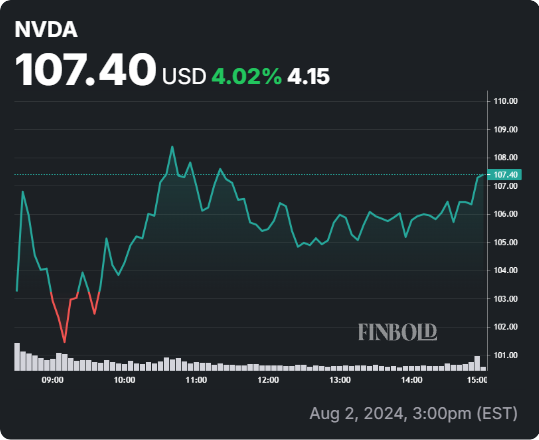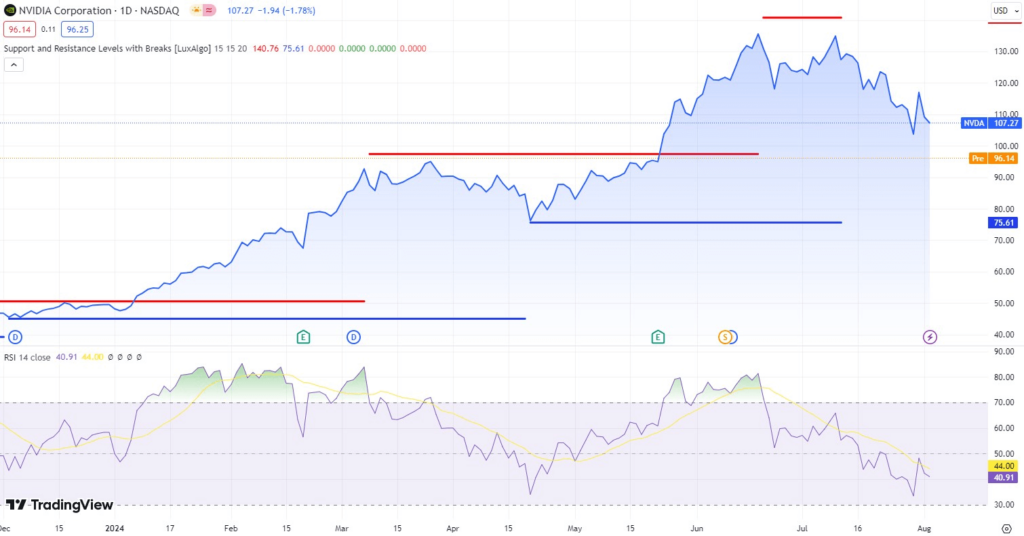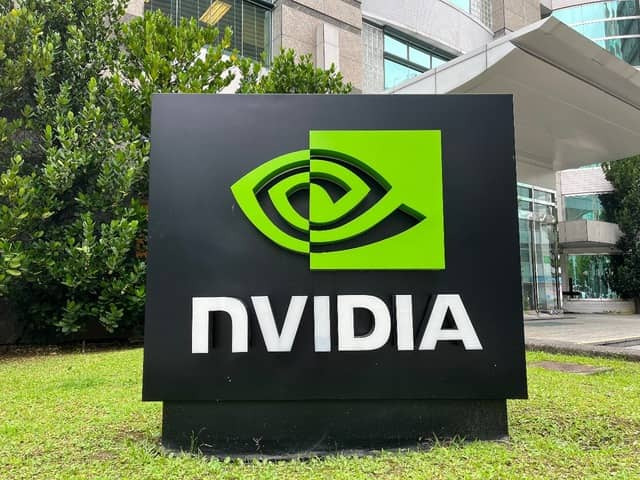The broader stock market downturn hasn’t left the semiconductor giant Nvidia (NASDAQ: NVDA) stock unaffected, as it lost over 14% of its value in the previous month.
Charts show that NVDA stock closed on August 2, trading at a $107.27 valuation after suffering a 1.78% decline. However, the pre-market losses are even more severe, as the chipmaker stock shredded 9.46% of its value over the weekend, lowering NVDA shares price below the $100 threshold at the time of publication.

Now the question arises: Should investors buy the dip, or are there more losses to come for Nvidia stock?
Technical analysis of NVDA stock
Technical analysis of NVDA stock indicates a recent breakdown through the $118 support level has formed a double top pattern, signaling potential further declines to $103 or lower.
The chipmaker’s stock is trading within a range of resistance at $135 and support at $96. If the current pre-market losses hold or extend, this level will quickly be breached, further amplifying the downward trend in the chipmaker’s stock.
Additionally, the relative strength index (RSI) curve is trending downward, showing a 40 reading and suggesting an early warning of a possible bearish reversal as it heads toward oversold territory.

Wall Street is still optimistic about Nvidia
When looking at average price targets from Wall Street’s financial institutions, it is important to remember that the vast majority of ratings have not been updated recently, thus not factoring in the current market downturn and the possibility of a recession.
That said, analysts rate Nvidia stock as a “strong buy” based on 41 ratings. Of these, 37 recommended a “buy,” 4 opted for a “hold,” and none recommended a “sell.”
According to the latest closing price on August 2, the average price target is $142.74, signaling a potential 33.07% upside.

Analysts view the recent Nvidia dip differently
On August 5, Citi removed its 30-day upside catalyst watch on Nvidia following reports of a three-month delay in the release of its Blackwell chips.
Analyst Atif Malik notes that while the delay is expected to reduce January-quarter data center sales by approximately 15%, strong demand for the H100 and H200 chips could help mitigate this decline.
Despite the 5% downward revision of the fiscal year 2025 sales, Citi maintains its overall estimates for the fiscal year 2026, factoring in the potential impact of U.S. restrictions on B20 artificial intelligence (AI) GPU exports to China.
While Nvidia continues to dominate the AI GPU market with a 90% market share, the delay could give Advanced Micro Device (NASDAQ: AMD) an opportunity to gain traction as an alternative supplier.
Elsewhere, an Elliott hedge fund called AI overhyped and warned investors that Nvidia stock is currently in a bubble and that the demand for its chips isn’t sustainable over the long run.
However, where some see trouble, others see an opportunity as Morgan Stanley’s Joseph Moore argues that the recent sell-off in Nvidia presents potentially a “good entry point” while moving the chipmaker’s stock to the “Top Picks” list.
Buy stocks now with eToro – trusted and advanced investment platform
Disclaimer: The content on this site should not be considered investment advice. Investing is speculative. When investing, your capital is at risk.








